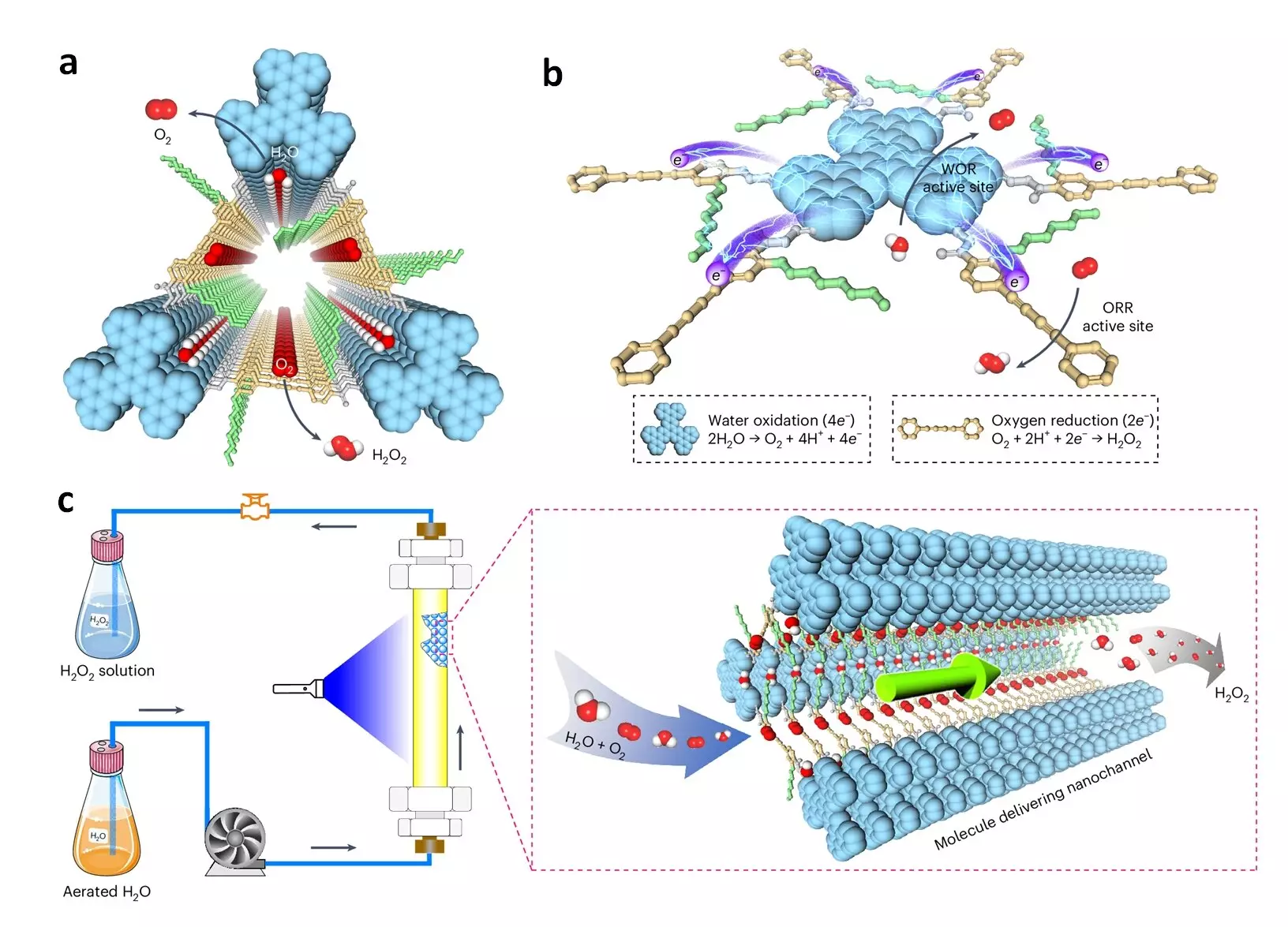The production of hydrogen peroxide (H2O2) is a crucial process in the industrial sector, often requiring energy-intensive methods and the use of costly catalysts. However, researchers at the National University of Singapore (NUS) have developed a groundbreaking approach to this process by harnessing the power of artificial photosynthesis. This innovative method involves the use of hexavalent photocatalytic covalent organic frameworks (COFs) that mimic natural photosynthesis, utilizing sunlight as an energy source and abundant water and air as feedstocks.
The conventional method of H2O2 production typically involves the use of anthraquinone as a catalyst, which necessitates high energy input, noble metal catalysts, and hazardous solvents. These factors contribute to the inefficiency and unsustainability of the process. The artificial photosynthesis approach offers a promising alternative, but faces significant challenges including insufficient charge carrier generation, limited catalytic sites, and inefficient charge and reactant delivery.
Led by Professor Donglin Jiang, the research team at NUS has devised a new strategy to tackle these challenges by developing hexavalent photocatalytic COFs. These porous and crystalline materials are constructed from organic molecules linked by strong covalent bonds, providing an ideal platform for efficient photocatalysis. By designing the π skeletons and pores of the COFs, the researchers have created a new type of donor-acceptor framework photocatalysts with dense catalytic sites for oxygen reduction and water oxidation.
The novel photocatalytic COFs feature spatially segregated donor and acceptor columns, facilitating the separation of holes and electrons to prevent charge recombination and promote rapid charge transport. Additionally, the engineered hydrophilic pore walls of the COFs enable efficient passage of water and dissolved oxygen to the catalytic sites, enhancing reaction kinetics. As a result, the COFs exhibit impressive production rates, apparent quantum yields, and solar-to-chemical conversion efficiencies, surpassing the performance of conventional methods.
The transition of hexavalent photocatalytic COFs from bath reactors to flow reactors demonstrates their sustainability and operational stability. These COFs are capable of producing over 15 liters of pure H2O2 solution under ambient conditions, showcasing their long-term performance and reliability. Prof Jiang’s remarks highlight the culmination of nearly two decades of research efforts in the field of COFs, emphasizing the significance of these novel photocatalysts in addressing fundamental challenges in H2O2 production.
The development of hexavalent photocatalytic COFs represents a major advancement in the field of artificial photosynthesis and sustainable catalysis. By overcoming key challenges in charge carrier generation, catalytic site availability, and mass transport, these COFs offer a promising pathway towards efficient and environmentally-friendly H2O2 production. The innovative research conducted at NUS opens up new possibilities for the industrial synthesis of valuable chemicals through the power of artificial photosynthesis.


Leave a Reply